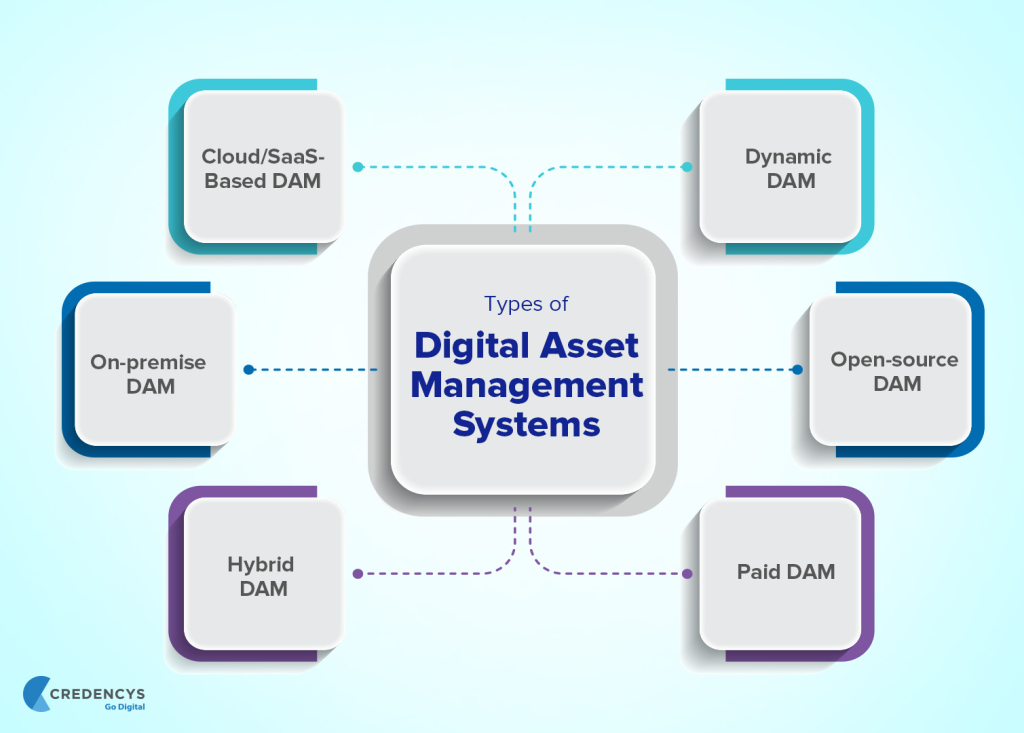
In today’s digital landscape, managing a vast library of media files—such as images, videos, documents, and other content assets—has become a critical part of every organization’s operations. Digital Asset Management (DAM) tools are designed to simplify the process of organizing, storing, and sharing digital content efficiently. But with a plethora of DAM solutions available, businesses face an important decision: should they choose an open-source DAM tool or invest in a paid DAM solution?
This blog explores the differences between open-source and paid DAM tools, helping digital marketers, content teams, and SEO professionals decide which option best aligns with their organization’s needs, budget, and scalability requirements.
What Are DAM Tools?
A Digital Asset Management (DAM) tool is a centralized system that helps businesses store, organize, and manage digital files and assets like images, videos, documents, and audio files. These tools facilitate easy access, retrieval, and sharing of assets, enabling teams to streamline their workflows and collaborate more effectively. DAM solutions are equipped with a range of features, including metadata tagging, file versioning, and rights management, to ensure smooth content handling.
Open Source DAM Tools: Customizable and Flexible
Open-source DAM tools are free-to-use solutions that provide users with the freedom to modify, distribute, and customize the software according to their needs. They are built and maintained by a community of developers, and their open-source nature means businesses can adapt the software to fit their unique workflows.
Advantages of Open Source DAM Tools:
- Cost-Effective: The most significant benefit of open-source DAM tools is that they are free. Organizations can save on subscription fees, making open-source options ideal for businesses with a limited budget, such as startups or small businesses.
- Customization: Open-source DAM tools offer full customization. Developers can modify the source code to tailor the system to meet specific requirements, such as unique metadata schemas or integrations with other software systems.
- Community Support: Open-source solutions often come with vibrant online communities. While they might not provide official customer support, the community offers valuable resources, troubleshooting tips, and collaboration opportunities, which can be a big help in solving issues.
Drawbacks of Open Source DAM Tools:
- Lack of Dedicated Support: Unlike paid tools, open-source DAM solutions often lack formal customer support. Businesses may need to rely on their in-house technical teams to resolve issues, which can lead to delays and increased workload.
- Complex Setup and Maintenance: Open-source tools typically require more technical expertise to set up, configure, and maintain. This can make the initial implementation challenging and require dedicated resources for ongoing maintenance.
- Limited Features and Scalability: While some open-source DAM solutions offer a broad range of features, others may be more basic, lacking advanced functionalities like automated workflows, advanced reporting, and in-depth analytics. Additionally, scaling these tools to accommodate growing teams can be difficult without significant technical adjustments.
Paid DAM Tools: Comprehensive Solutions with Support
Paid DAM tools come with a subscription-based pricing model and are typically equipped with a wide array of features designed to cater to organizations of all sizes. These tools are often marketed as “all-in-one” solutions, providing everything from content storage and management to collaboration tools and reporting features.
Advantages of Paid DAM Tools:
- Feature-Rich and Scalable: Paid DAM tools often offer a rich set of features, including advanced metadata management, version control, automated workflows, and detailed analytics. These solutions are designed to scale easily as your organization grows, making them ideal for larger teams or enterprises.
- Professional Support: One of the major advantages of paid DAM solutions is the access to professional customer support. Whether you encounter a technical issue or need assistance with system integration, having a dedicated support team can save time and reduce downtime.
- Enhanced Security and Compliance: Paid DAM tools often come with built-in security features such as data encryption, role-based access control, and compliance with industry regulations. This makes them a secure option for organizations handling sensitive or proprietary information.
- User-Friendly Interface: Paid solutions are generally more polished and easier to use. With an intuitive interface, built-in training, and user guides, employees can quickly get up to speed and begin using the tool efficiently.
Drawbacks of Paid DAM Tools:
- Cost: The most obvious downside of paid DAM tools is the cost. Subscriptions can be expensive, and pricing models often vary depending on the number of users, storage capacity, or additional features. This can be a barrier for small businesses with limited resources.
- Limited Customization: Although paid tools offer many features, they may not provide the same level of customization as open-source options. Some businesses may find it difficult to modify the tool to suit their specific needs or workflows.
Which One Is Right for Your Team?
When deciding between open-source and paid DAM tools, it’s important to consider your team’s specific needs, budget, and long-term goals. Here are some factors to keep in mind:
- Budget: If cost is a major factor, open-source DAM tools may seem like an attractive option. However, keep in mind the potential costs of customization, implementation, and ongoing maintenance.
- Customization Needs: If your team requires a highly tailored solution, open-source tools provide the flexibility to modify the software as needed. For teams seeking a hassle-free solution with minimal setup, a paid DAM tool might be the better choice.
- Support and Reliability: Paid tools come with dedicated support, ensuring that your team can quickly resolve issues. For businesses that prioritize reliability and continuous support, paid solutions are typically more suited to their needs.
Wizbrand: A Leading DAM Solution
When looking for an all-in-one, feature-rich DAM solution that combines the flexibility of customization with the convenience of professional support, Wizbrand is an ideal choice. As a leader in Digital Asset Management, Wizbrand offers comprehensive solutions that help teams organize, store, and manage digital assets seamlessly.

Wizbrand’s platform allows teams to optimize their digital assets for better visibility and engagement, integrating advanced features like SEO Management Software. Whether you’re looking to streamline workflows or enhance collaboration, Wizbrand provides an intuitive interface that simplifies asset management.
Explore the Best Digital Asset Management Software and discover why Wizbrand is considered one of the Best DAM Tools in the world.
Conclusion
Both open-source and paid DAM tools offer unique benefits, but the best choice depends on your organization’s budget, technical expertise, and the level of support required. Open-source tools are ideal for those who need flexibility and have the technical capability to implement and maintain the software. However, for teams looking for an out-of-the-box solution with professional support and a feature-rich platform, paid DAM tools like Wizbrand offer excellent value.
If you’re ready to take your digital asset management to the next level, explore Wizbrand’s platform today and see how it can streamline your content management process.



